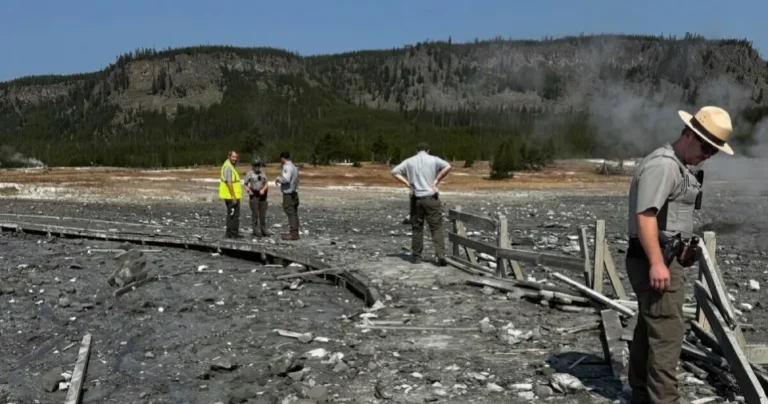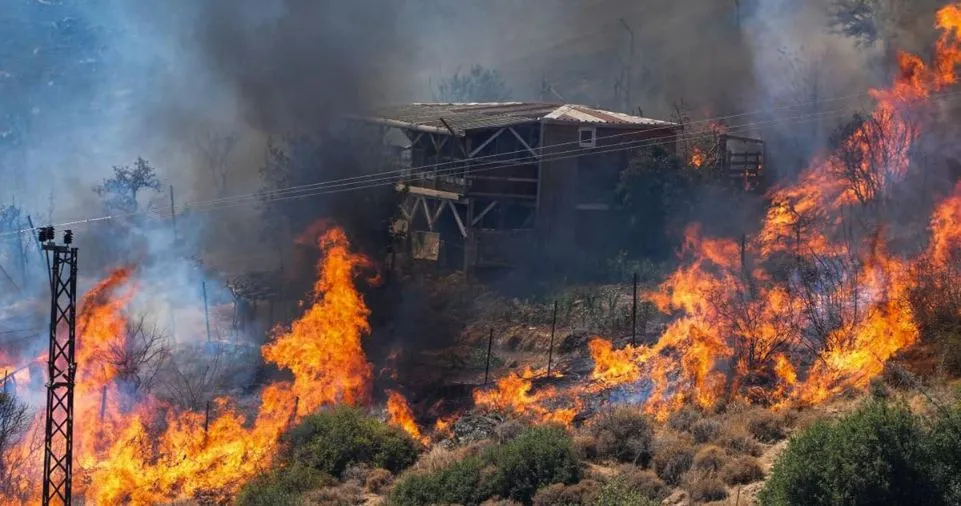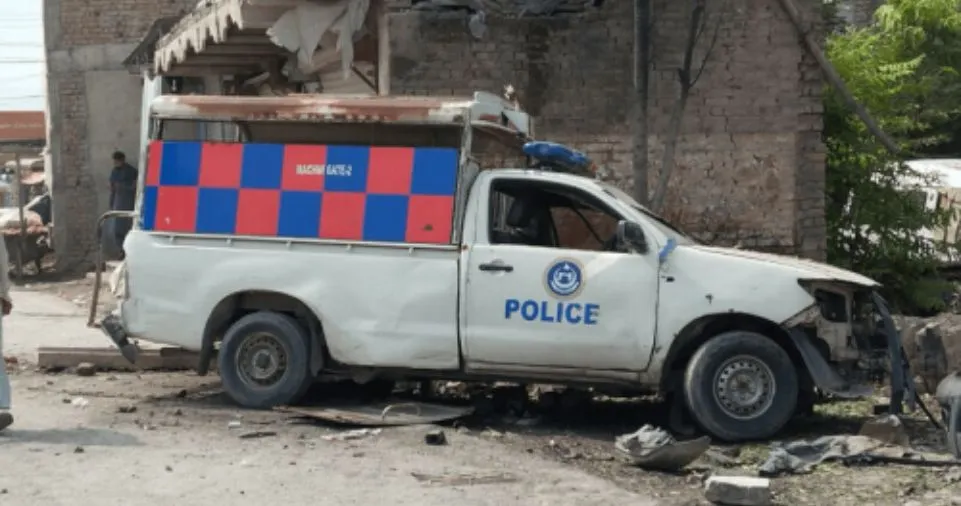According to the lead scientist at the U.S. Geological Survey’s Yellowstone Volcano Observatory, a hydrothermal explosion in Yellowstone National Park on Tuesday morning destroyed a boardwalk and hurled debris several stories into the air in the Biscuit Basin region northwest of Old Faithful.
Around 10 a.m. on Tuesday, approximately 2.1 miles northwest of Old Faithful, an explosion occurred, which Scientist-in-Charge Michael Poland described as “small,” most likely in the Black Diamond Pool in Biscuit Basin.
In an informational statement released early on Tuesday afternoon, Poland said that no injuries had been recorded as a result of the incident.
Many people were seen on the boardwalk near the explosion site in videos that witnesses uploaded online, and footage of the aftermath showed debris all over the place and a damaged boardwalk.
Geologists from Yellowstone National Park are looking into the explosion, but data indicates no unusual volcanic activity. As a result, the parking lot and boardwalks in Biscuit Basin have been temporarily closed for safety.
Monitoring data indicate that the Yellowstone area has not changed. Poland stated in a statement that the explosion of today is not indicative of activity within the volcanic system, which is still operating at background levels that are typical. “In addition to not being caused by magma rising to the surface, hydrothermal explosions like the one that occurred today are not a sign of impending volcanic eruptions.”
These explosions are “relatively common” in Yellowstone National Park, he added, and occur when water rapidly turns to steam beneath.
ALSO READ:
- Statement from President Joe Biden on Sonya Massey
- NEWS: Sanders on Netanyahu Addressing Congress This Week
- Pa. Gov. Josh Shapiro is a top contender for vice president. What would he bring to the ticket?
- Biden drops out of 2024 race after disastrous debate inflamed age concerns. VP Harris gets his nod
May 2009 had an explosion similar to this one near Biscuit Bay, while April 15 saw a lesser explosion in Norris Geyser Basin. In 1989, Porkchop Geyser in the Norris Geyser Basin erupted.
As to the U.S. Geological Survey, hydrothermal explosions may shoot mud, rock, boiling water, and steam up to a height of 1.2 miles. Large hydrothermal explosions occur on average every 700 years, according to a 2018 analysis. According to the study, at least 25 craters that are at least 328 feet wide have been found in the park.
“Even though they are uncommon occurrences in human history, there is a considerable chance that similar events will occur in the future in Yellowstone National Park,” the paper said. A few hundred years may see an explosion big enough to leave a crater that is 100 meters (328 feet) across, according to the frequency of massive hydrothermal explosion occurrences during the previous 16,000 years.
The National Park Service reports that Black Diamond Pool had “several explosive eruptions” in the days that followed the July 2006 earthquake, but eruptions have been “infrequent” subsequently. The pool exploded with black, murky water. It has an average temperature of 148.5 °F.
No other information was immediately available early Tuesday afternoon, according to the Yellowstone National Park public relations office, which directed the Daily Montanan to the press release from the Yellowstone Volcano Observatory.
As further information becomes available, the Yellowstone Volcano Observatory promised to disclose it.







